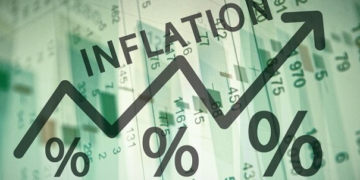The US House of Representatives has approved a deal to raise the debt ceiling and allow government to borrow more money, days before the world’s biggest economy is due to start defaulting on its $31.4tn debt, which underpins the global financial system.
The bill which passed the House by a vote of 314-117, now heads to the senate with passage expected by the end of the week before President Joe Biden can sign it into law by Monday, June 5, when the government is forecast to hit its borrowing limit.
A default would mean the government could not borrow any more money or pay all of its bills. It would also threaten to wreak havoc on the global economy, affecting prices and mortgage rates in other countries.
Raising the US debt limit, ensures Treasury can borrow to pay already incurred US debts.
The 99-page bill restricts spending for the next two years, suspends the debt ceiling into January 2025 and changes some policies, including imposing new work requirements for older Americans receiving food aid and greenlighting an Appalachian natural gas line that many Democrats oppose. It bolsters funds for defense and veterans.
The bill passed Wednesday evening, saw 165 Democrats joining 149 Republicans in voting to raise the debt ceiling,

Republicans control the House by a narrow 222-213 majority.
US House Speaker Kevin McCarthy celebrated as “the biggest cut and savings this Congress has ever voted for.” According the bill saves the country about $2.1 trillion dollars.
The last time the US came this close to default was, in 2011, the credit agency Standard & Poor’s downgraded the country’s rating.
In a statement, Mr Biden thanked the Speaker, saying he had negotiated in good faith.
“Neither side got everything it wanted,” said the president. “That’s the responsibility of governing.”
Investogist had reported that President Joe Biden and House Speaker Kevin McCarthy on Saturday reached an agreement that would raise the nation’s legal debt ceiling.
Central to the compromise is a two-year budget deal that would hold spending flat for 2024 and increase it by 1% for 2025 in exchange for raising the debt limit for two years, which would push the volatile political issue past the next presidential election.
Since 1917, the US has had a law that sets a statutory limit on the total amount of debt that the Government is allowed to have. The limit was first set at $11.5bn.
The debt ceiling has been raised more than 100 times since 1917 and It now stands at $31.4 trillion. In January of this, the US government debt hit this level, which means that the Government cannot legally borrow any more money.
Ifunanya Ikueze is an Engineer, Safety Professional, Writer, Investor, Entrepreneur and Educator.






















































